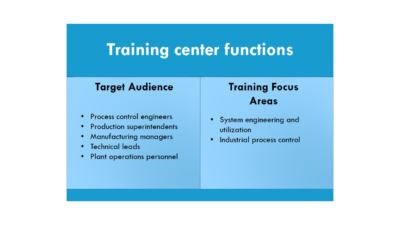Fast switching of power transistors and pulse-width modulated (PWM) output of variable-frequency drives (VFDs) produce large, rapid voltage swings—generating electrical noise, or electromagnetic interference. EMI refers to any disturbance to normal operation of electric equipment (and drives). Its two main forms are conducted EMI (150 kHz-30 MHz range), due to abnormal energy passing alon...
|
Fast switching of power transistors and pulse-width modulated (PWM) output of variable-frequency drives (VFDs) produce large, rapid voltage swings—generating electrical noise, or electromagnetic interference. EMI refers to any disturbance to normal operation of electric equipment (and drives). Its two main forms are conducted EMI (150 kHz-30 MHz range), due to abnormal energy passing along cable connections and radiated EMI (30 MHz-1 GHz range), caused by wave transmission. EMI has several coupling mechanisms as described later.
Drive design and installation must mitigate EMI to prevent degraded performance or cause harm to the drive, as well as limit spread of interference to nearby equipment or facilities. Electromagnetic compatibility (EMC) is an overall approach for addressing these issues in electrical equipment.
EMI limits differ depending on where a drive is installed. The main international EMC standard for drives (IEC 61800-3) defines two installation environments— residential (including offices and hospitals) and industrial —with different EMI limits. Currently there is no U.S. standard covering drive EMC (more at Ref. 1 online).
|
Separating different cable types is a prudent EMC measure. SEW Eurodrive recommends 10 cm (4 in.) spacing between cable groups I and II; 20 cm between groups II and III and between groups III and IV.
|
Rating considerations
According to Matt Murray, corporate trainer at SEW Eurodrive, two major rating considerations apply to EMI and EMC: Emission (the limit of interference the drive can give to other system components) and susceptibility (how much EMI the drive can handle before it malfunctions). “Industrial installations have higher allowable emission limits, because of less exposure to people and generally less sensitive equipment,” Murray says.
Baldor Electric Co. also differentiates between emission and susceptibility, but interprets the latter as immunity or ability of drives to perform without degradation under EMI from elsewhere in the system. Rick Kirkpatrick, product manager-V*S Drives at Baldor, notes examples of tough applications for drive emissions in highly instrumented systems—including test stands and dynamometers—and hospitals. “Very sensitive instruments can be ‘confused’ by drive-produced noise (first case) and can cause microprocessors in critical life-support systems to run erratically or shut down (second case),” he says. Drives in a hospital’s extensive HVAC system would be the emission source.
“Drive immunity is another story,” Kirkpatrick continues. For example, arc welding is a severe application that can cause drive tripping, but often the drive is suspect not the noise source (welding) due to generic fault labels. Ac drives in close proximity to dc drives pose another tough EMI environment. Kirkpatrick adds that dc drives “can create significant ac line ‘notching,’ which can cause problems for ac drives—especially ones with SCR-based front-end bridges.” However, dc drive market size is reducing this problem.
Beckhoff Automation notes the propensity of servo drives (or other high-performance drives) for very high conducted line noise as a result of high capacitance from the drive to Earth ground in motor cables and inside the motor. “Charged-state to discharged-state frequency of this capacitance equals the PWM rate of the drive,” says Bob Swalley, application/support engineer at Beckhoff.
EMI can develop through various coupling mechanisms, notes Swalley. Conducted noise is initiated from electrical current of motors and drives, then coupled between components via interconnecting wires; impedance coupling occurs when circuit devices share a common power source and thus the same reference to ground wire. Other mechanisms include radiated coupling , caused by electrical and magnetic field sources; electric field coupling , caused by a voltage difference between conductors (such as capacitors); and magnetic field coupling due to current flow in conductors, as in transformers, Swalley explains.
In ABB Inc.’s view, the main difference between residential and industrial drive applications is the latter’s frequent use of motor cable trays and combined wire runs. “This can lead to capacitive coupling of the PWM waveform on output cables with the input power grid and cables,” says Mike Olson, power & control sales manager-HVAC applications at ABB. However, “industrial customers will often install more expensive VFD cables when educated by the drive manufacturer.”
In contrast, non-industrial sites often use the least costly individual conductors that meet local codes. “Inexpensive wire works fine when run in properly grounded and bonded metal conduits, and with four wires pulled (three conductors and a ground)—but not so well when poorly installed or only with three conductors pulled,” Olson states. Moreover, hospitals, airports, schools, etc., often have EMI/RFI-sensitive equipment that exacerbates poor installation practices, he notes.
|
Filters are key to mitigating EMI. Shown is one of a wide range of RFI/EMC filters offered by Block USA LP (www.blockusa.com) for drives and electrical systems. Block’s HLD-110 series line-side, 3-phase filters are rated up to 30 A (per phase) 520 V.
|
Grounding, grounding, . . .
Because EMI solutions involve a whole system (drives, motors, cabinets, cabling), proper grounding of all elements is vital to success. It’s a common theme voiced by all respondents to this article.
In Olson’s long experience, nearly all electric noise issues arise from improper installation. “A very large percentage of these problem jobs are due to poor/improper grounding,” says Olson. To avoid EMI/RFI issues, he strongly recommends hiring a well-qualified electrical contractor to install VFDs and ensure that the drive manufacturer’s installation instructions are followed “to the letter.”
SEW Eurodrive stresses the importance of proper equipment grounding. “In fact, it’s the number-one drive EMI problem at most customer installations,” suggests Murray. New start-ups often have something wired incorrectly, and, he says, grounding generally is not given enough forethought in U.S. installations (more at Ref. 2 online).
Murray mentions two different grounding practices in use: low frequency (LF) ground for LF noise and shock prevention, and high-frequency (HF) ground, which is crucial to minimize EMI. Some installers believe that “ground is the green wire and as long it’s under the screw going into the side of the cable tray” everything is OK. That technique is insufficient to ensure proper grounding for EMC, Murray explains.
High-frequency noise is the larger problem, causing a skin effect where electrons flow to the outside of conductors. Large surface grounds are necessary to get rid of HF noise. “Grounding all the way around the outside of the shield gives a chance for all HF skin-effect noise to flow to ground,” Murray says. In addition, all system equipment in an installation must have the same reference point for low- and high-frequency grounding.
Advice to users
ABB recommends use of metal conduit or VFD cable (continuously extruded armored cable with three symmetrical ground wires and three symmetrical motor wires). Separate metal conduits are required for:
-
Input power;
-
Output (motor) power;
-
Control wires (115 V ac); and
-
24 V dc control or communications wires.
“Therefore, each properly installed VFD should have at least three separate metal conduits, properly bonded and grounded,” Olson says.
SEW Eurodrive’s recommendations for industrial versus residential drive installation typically differ in the type of EMI filter and/or output choke to use. “We (and others) offer two series of the same inverter—one with and one without an EMI filter,” Murray says. For an industrial site, smaller drives usually have an EMI filter built-in, while for a residential site an external output filter is common. This is cost-effective for SEW. “Drives tend to be more costly in Europe because of strict EMC regulations and the need for higher compatibility,” Murray adds.
Proper cable routing is another crucial EMC area. SEW Eurodrive notes it’s not uncommon to find low-voltage (24 V dc) encoder wire piled on top of 460 V PWM power cable. This allows an individual conductor to act as a noise transmitter or receiver. Ensuring that encoder (and bus) wiring is properly shielded is further important advice. For larger applications with many drives and subsystems, SEW recommends an application engineer do groundwork to evaluate the site’s EMC requirements.
At Baldor Electric, the answer for drive emissions is almost always an input EMI/EMC filter. “A filter placed in front of the drive on the incoming ac line decreases the amount of noise the drive places onto the line, mitigating interference elsewhere in the system,” says Kirkpatrick. As for drive immunity, improved on-site grounding techniques usually provide a remedy. He says, “In some cases, it may be necessary to redesign certain drive circuit boards to improve grounding planes to address very noisy conditions.”
Baldor also offers drives in versions with and without EMI filter. Drives without filter are sold primarily in the U.S.; those with filter go to CE Mark countries or to U.S. sites where drive EMI noise is of concern, states Kirkpatrick. “For our drives without filtered versions, we recommend external filters available to address those situations.”
However, some European-based drive manufacturers see a single “global” drive product as the less costly route to EMI compliance.
Modern drive design also helps mitigate EMI. “Quality VFD manufacturers now pay substantial attention during the design phase to board layout and power traces to avoid coupling high-frequency noise back to the power lines,” adds ABB’s Olson. Low-band pass RFI/EMI filters built into ABB’s base VFD designs reportedly keep issues from arising in all but the worst installations.
ONLINE EXTRA
Why is improper EMI grounding so common?
It’s natural to ask this question given the occurrence of improper grounding in numerous installations. Proper grounding and bonding is a must to mitigate electromagnetic interference (EMI) in variable-frequency drives (VFDs) and electrical systems.
Mike Olson, power & control sales manager-HVAC applications at ABB Inc., suggests two reasons for this situation: 1) VFDs are the most EMI-prone devices that installers handle and their routine grounding methods used with other devices are not always adequate for drives, and 2) many buildings in the U.S. don’t have a good, solid common ground, placing one floor-or one side of a building-at a slightly different potential than the main ground connection in the basement. "All building grounds should be at the same potential, which is often not the case," Olson says.
Grounding effectiveness for electromagnetic compatibility (EMC) is enhanced by an added bonding component. Electrical bonding connects metallic, non-current carrying components at a location, placing them at the same electric potential.
https://www.abb.us/drives
Matt Murray, SEW Eurodrive’s corporate trainer, believes that proper grounding tends to be more of a problem in the U.S. than in Europe and other parts of the world. This comes, in part, from the relatively reliable power grid with fairly clean power compared to other countries. It seems that belief in grid reliability is causing some electric equipment installers to not focus first on proper EMI grounding practices.
"European equipment and drives come with extra EMI measures-and higher cost-due to generally less grid reliability," says Murray. "OEMs don’t know where a system might end up being used when they’re designing it. This is the main reason for the increased measure of EMI protection included in a system. It includes filters, output chokes, and importantly, proper grounding for EMC."
Another part of the answer is that presently there is no binding EMC regulation for electric drives in the U.S. As a result, not all equipment installers are fully aware of EMC requirements.
| Author Information |
| Frank J. Bartos, P.E., is Control Engineering consulting editor. Reach him at [email protected] . |
How drive users should prevent or reduce EMI
Beckhoff Automation asks drive users to consider cabling and other points:
-
Use surge suppression components on all electrical coils;
-
Use only motor power and feedback cables supplied by the servo drive manufacturer for the application;
-
Use twisted-pair wires and shield all wires carrying low-level signals to inhibit noise coupling from high-level power cables (motor or relay wires);
-
Use single point grounds (i.e., ground to Earth at one point) to avoid ground loop potential;
-
Separate control/signal cables from power and motor cables or place the different cable types at 90 deg to each other to reduce noise coupling; and
-
Use isolation transformer and line filters on the input line (mains), as needed, to produce stable, balanced, and clean power.



